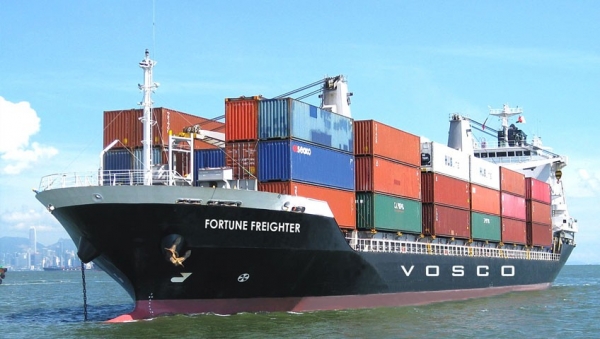In recent months, high shipping costs have been putting significant pressure on export businesses. Since 2021, export businesses have been struggling with increasing freight rates and transportation fees. Notably, there have been times when shipping costs have increased up to 5 times, causing businesses to struggle with rising transportation expenses.
In 2021, shipping costs reached record highs due to container shortages and the impact of Covid, and in 2022, the ongoing conflict between Russia and Ukraine led to continuous increases in shipping costs. These difficulties have persisted, and in early 2024, tensions in the Red Sea have further driven up maritime transportation costs along with a series of additional fees.
According to businesses, the transportation costs from Vietnam to markets abroad are currently around $4,000 – $4,500 per container, in addition to extra charges of about $1,500 – $3,000 per container. When adding up the total expenses for shipping one container in a month, the transportation fees for shipping goods to the US West Coast have increased by 70%, while refrigerated goods going to Europe have nearly quadrupled in cost.

Continuous increase in shipping costs
Significantly, while businesses continue to face challenges from high shipping costs, shipping lines have recently taken the initiative to increase various types of fees and surcharges. In a recommendation letter sent to the Ministry of Transport, the Ministry of Finance, the Ministry of Industry and Trade, the Price Management Department, and the Vietnam Maritime Administration regarding strengthening the management of surcharges by foreign shipping lines, the Vietnam Shippers’ Council stated that for many years, foreign shipping lines have unilaterally imposed dozens of different fees and surcharges on the goods of Vietnamese import-export businesses.
Moreover, shipping lines have continuously increased these fees and surcharges without sufficient basis or compliance with the regulations of the state management agencies. These fee increases have been considerably higher than the container handling fees returned to Vietnamese ports by shipping lines.
According to the latest update, when Circular 39/2023/TT-BGTVT of the Ministry of Transport adjusting the prices of services such as harbor dues, bridge and dock usage fees, container handling fees, container delivery charges, and towing services was issued on December 25, 2023, with effect from February 15, 2024, foreign shipping lines promptly announced a 10 – 20% increase in Terminal Handling Charge (THC) for each type of container service in Vietnam since the beginning of February 2024.
Notably, this fee increase only applies to Vietnam, while other countries in the region have yet to make any upward adjustments. Moreover, in absolute terms, the 10 – 20% increase in THC fees by shipping lines is more than 3 times higher than the adjustment in container handling fees at Vietnamese seaports. The Vietnam Shippers’ Council also added that this adjustment of THC fees is not the first time, raising suspicion about whether shipping lines are colluding to impose higher costs on Vietnamese importers on their own turf.
In practice, many Vietnamese export businesses have reported that there are too many factors driving up logistics costs, which significantly affect the competitiveness of Vietnamese businesses in the global market. Many orders from Vietnamese businesses have been canceled, deliveries delayed, payments withheld, and new orders cannot be signed. However, Vietnamese businesses have virtually no choice because international maritime transport is heavily dependent on foreign shipping lines. Currently, Vietnamese shipping lines account for only about 10% of the market share and mainly operate routes to nearby countries such as China, Japan, South Korea, and Southeast Asia. Vietnam’s exports to major markets such as the US, EU, etc., mostly rely on foreign shipping lines.









































